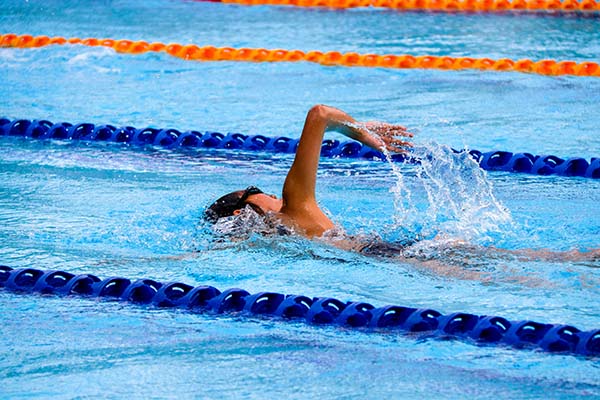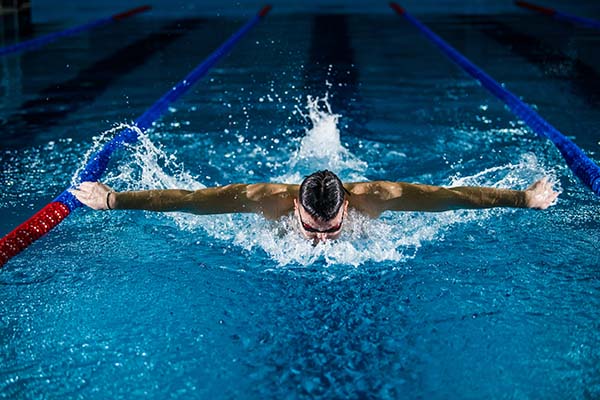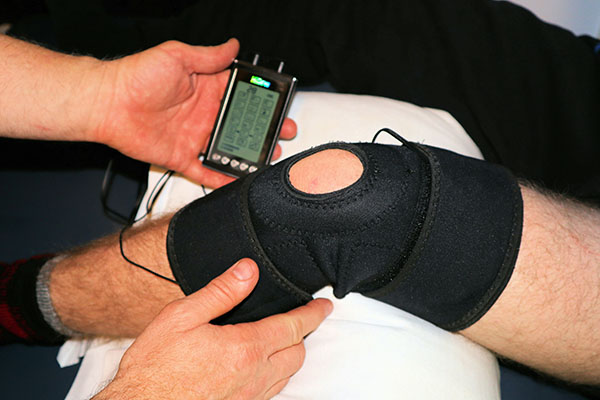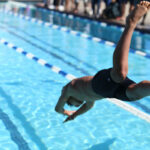Swimming is known for being a low-impact sport, one that’s gentle on the joints compared to activities like running. However, it doesn’t mean swimming is entirely free from injury risks. Though it’s not very common, knee pain can happen in swimmers, especially if they’re not mindful of technique or pushing too hard. I haven’t experienced knee pain in the pool personally, but as someone training for triathlons, I know how frustrating any injury can be, it can really sideline your progress. If you’re dealing with knee pain or want to avoid it altogether, this guide can help you understand the causes, the types, and the best ways to treat it.
Types of Knee Pain in Swimmers
Let’s dive into the two main types of knee pain that tend to pop up for swimmers. Knowing which type of pain you’re dealing with can help you figure out the best path to recovery.

1. Patellofemoral Pain (Swimmer’s Knee)
Patellofemoral pain, or “swimmer’s knee,” is a common type of knee ache that usually affects the front of the knee. This pain comes from the patellar tendon, which is the tendon connecting your kneecap to your shinbone. When this tendon is under repeated stress, like it can be with the repetitive kicks in the breaststroke, it can get sore, leading to discomfort right around your kneecap. If you notice a dull ache when you bend your knee or kick, this might be what’s going on.
2. Fat Pad Irritation
The second type of knee pain you might run into is fat pad irritation. The fat pad is a cushiony spot under the kneecap that helps absorb shock. But with certain strokes or poor technique, it can become irritated, causing a deep ache around the knee joint. This type of pain often happens from awkward or repeated movements that press the fat pad against the knee, causing inflammation.
Why Does Knee Pain Happen While Swimming?
There are a few main causes behind knee pain in swimming. Some of it boils down to form, some to equipment, and other times it’s simply training too intensely.
1. Knee Posture and Position
How you hold your legs in the water matters a lot. If you’re constantly bending your knees or turning your legs in awkward angles (especially with breaststroke), you’re putting extra strain on the tendons around the knee. Maintaining good posture and a relaxed kick can help avoid this.
2. Swimming Technique
Your swimming style, especially the type of stroke you choose, can also make a big difference. Breaststroke is known to be tougher on the knees because of the “whip kick” motion, which requires a lot of knee movement and rotation. If you’re just learning or don’t have the technique quite right, this kick can quickly turn into strain. Freestyle and backstroke are usually easier on the knees, but poor technique or too much force can still create problems.
Personal tip: When I started learning freestyle, I thought the harder I kicked, the better. But all that extra force wasn’t really helping me swim faster; it just tired my legs out. A steady, controlled kick ended up being way more effective, and easier on the knees.

3. Training Gear
Training equipment can be both helpful and risky. Fins, kickboards, and resistance bands make swimming workouts more intense, but they also add extra strain on your muscles and joints. If your knees aren’t ready for the added resistance, it’s easy to push too far. Start slowly with these tools and work up to using them in longer sessions to avoid strain.
4. Intensity of Training
Sometimes, knee pain can come down to pushing yourself too hard or training without enough rest. Even though swimming is a low-impact sport, it’s still repetitive on the body, especially if you’re practicing the same stroke over and over. Taking rest days or mixing up your strokes can be a simple way to give your knees a break.
Treatments for Knee Pain in Swimming
If knee pain sneaks up on you, addressing it early is key. Trying to swim through the pain can make things worse, so here are some ways to help manage the pain and recover faster.
1. Ice Therapy
Ice therapy can be super effective in reducing swelling and pain. Wrap some ice in a towel or use a cold pack, and apply it to your knee for 15-20 minutes at a time. A few sessions of icing each day can really help calm down any inflammation and reduce pain.
2. Over-the-Counter Pain Relief
Anti-inflammatory medications, like ibuprofen, can be useful for managing mild to moderate pain in the short term. They can help with both pain relief and reducing swelling, though they aren’t a long-term solution. If you find yourself needing these regularly, it’s worth checking with a doctor.
3. Steroid Injections
Steroid injections can offer more serious pain relief in cases where inflammation just won’t go down. This is usually an option after other treatments haven’t worked and the pain is still affecting your training. A healthcare provider can inject steroids into the knee to bring down the inflammation directly.
4. Massage and Taping
Massage can loosen tight muscles and relieve some of the tension around your knee. Taping, on the other hand, gives support to the joint. A physical therapist can help with taping techniques and show you the best ways to apply tape for pain relief and stability.

Exercises for Knee Strength After Pain
Once the pain has gone away, strengthening the muscles around your knees is a smart way to prevent future pain or injuries. Here are a few exercises that target the muscles you rely on for knee stability and strength.
Squats
Squats are one of the best exercises for strengthening your quads and glutes, which are important for knee stability. Start with bodyweight squats to get your form right, and then add weight once you’re comfortable. Focus on keeping your knees aligned with your toes and avoid going too low if it feels uncomfortable.
Lunges
Lunges work on your quads, glutes, and hamstrings, making them great for overall leg stability. Start with shallow lunges and gradually increase the depth as your strength improves. Keep your knee aligned with your toes and avoid any side-to-side movement to protect your joints.
Deadlifts
Deadlifts strengthen the glutes, hamstrings, and lower back, all of which help support your knees. Begin with light weights, focusing on a slow and controlled movement. This exercise can be a big help for building lower-body strength and protecting your knees in the long run.
Preventing Knee Pain in Swimming
Preventing knee pain before it happens is always better than dealing with an injury. Here are a few tips to help protect your knees while swimming:
- Focus on Your Technique: Good technique can go a long way in preventing injuries. If you’re learning a new stroke or feel unsure about your form, consider taking a few lessons or watching instructional videos to improve.
- Warm Up Before Swimming: Warming up can make a big difference. Doing some light stretches or dynamic movements, like leg swings, helps get your body ready for the workout.
- Take Rest Days: Swimming every single day can be tempting, but giving yourself rest days can help prevent overuse injuries. Balance your sessions with rest, and don’t ignore soreness.
- Be Cautious with Training Gear: Fins, kickboards, and other tools are great for building strength, but ease into using them. Start slow and gradually increase your usage so your knees can adapt to the added resistance.
Final Thoughts
Swimming is an incredible workout for both strength and endurance, and while it’s generally easy on the joints, knee pain can still happen. By focusing on good form, managing your training intensity, and taking rest days, you can keep your knees healthy and pain-free.
If knee pain does show up, don’t brush it off. Address it early with ice, rest, and maybe even massage or taping. And once you’re feeling better, strengthen the muscles around your knee with squats, lunges, and deadlifts, these exercises help prevent pain in the future by giving your joints extra support.
From my own experience in triathlon training, I know that listening to your body and respecting rest days can make a world of difference in staying injury-free. Swim smart, take care of your knees, and enjoy every minute in the pool!





